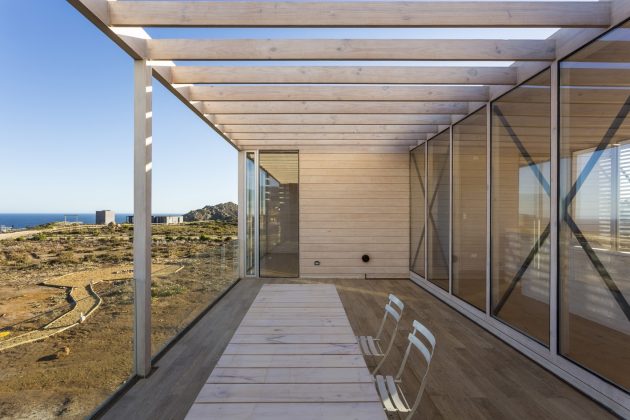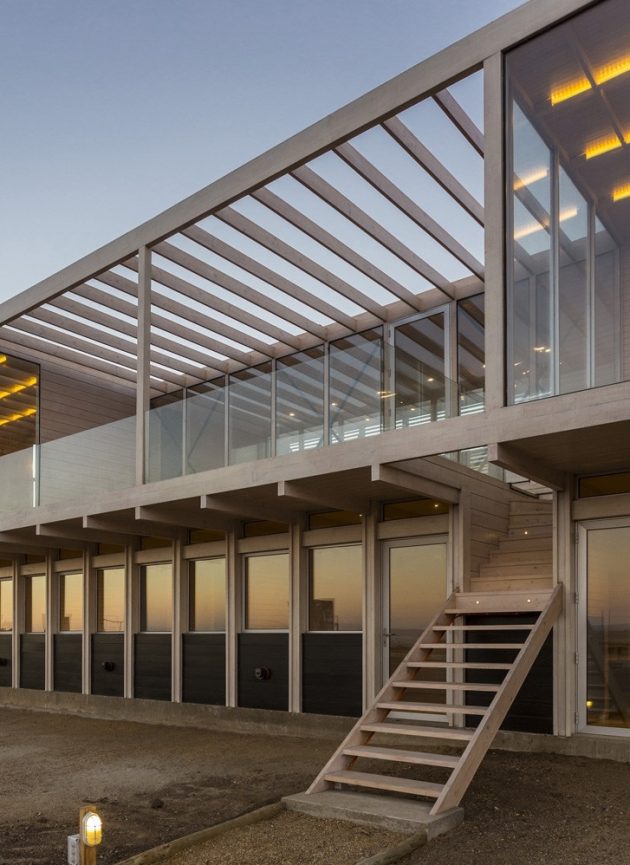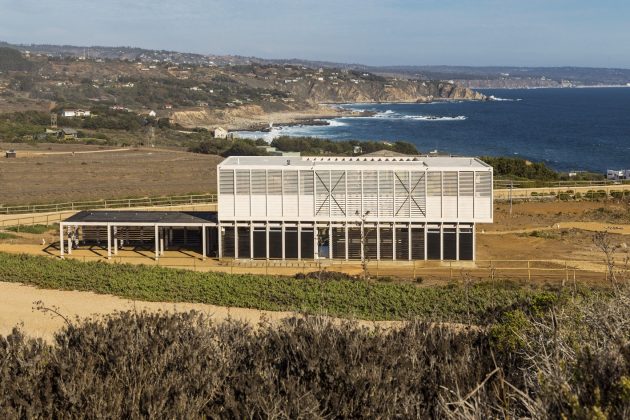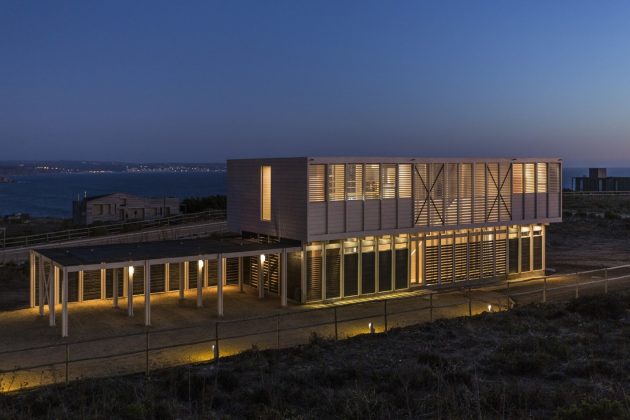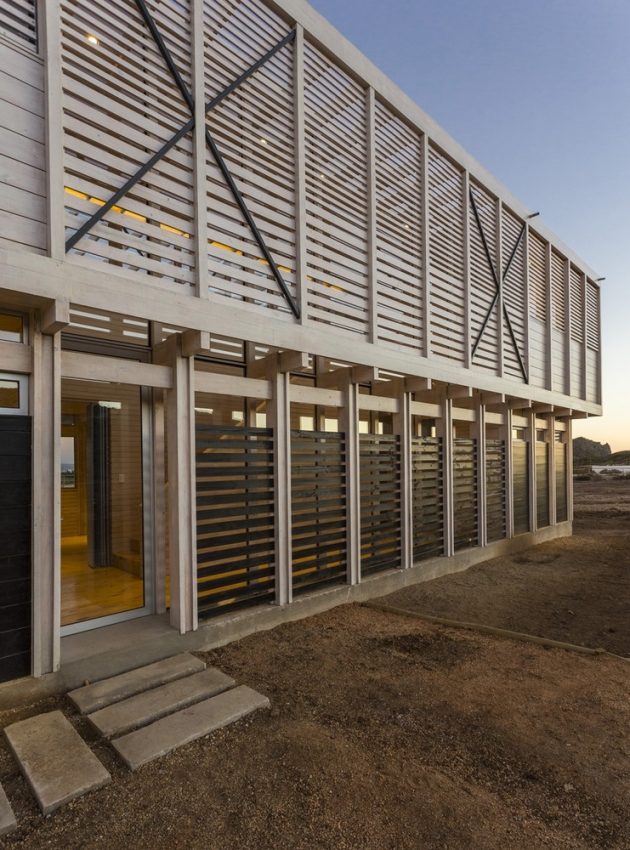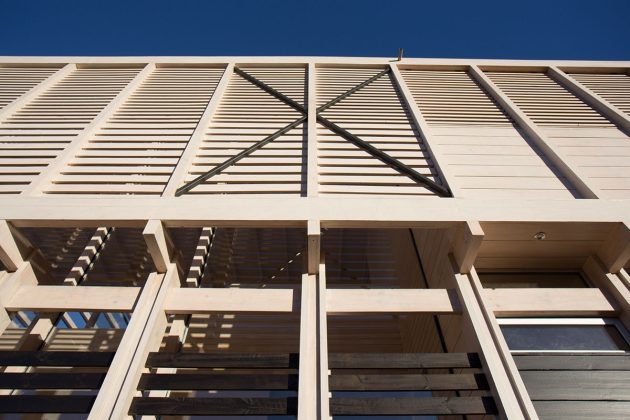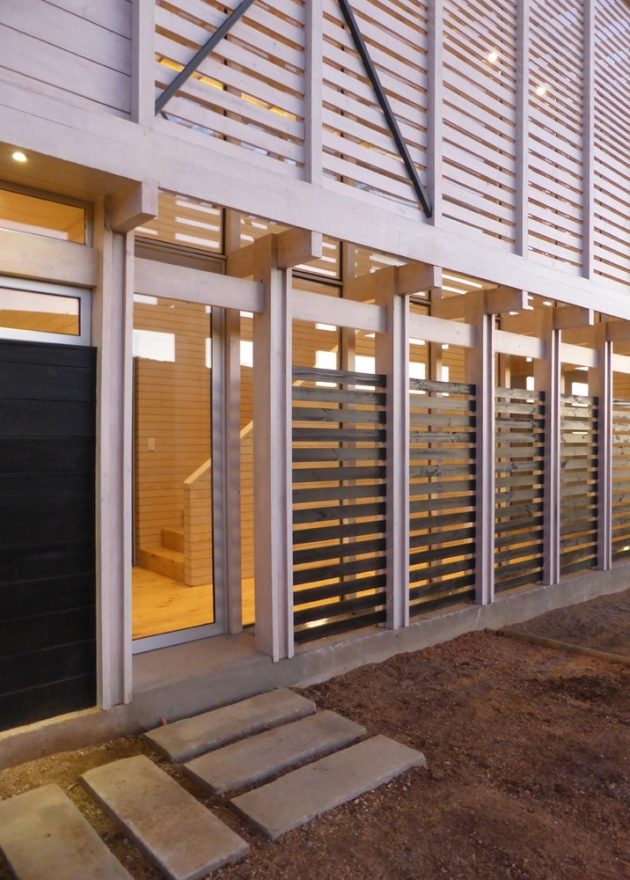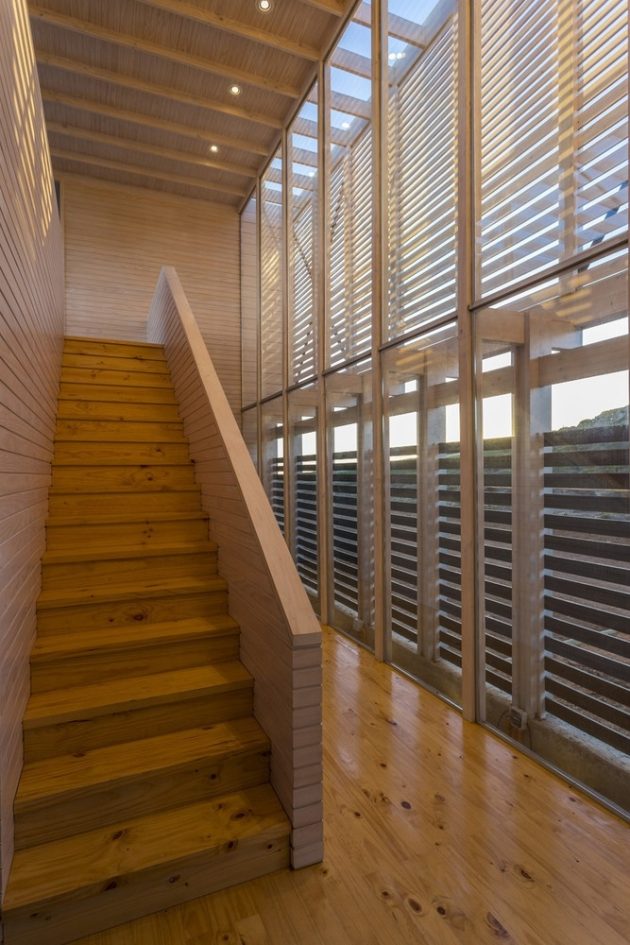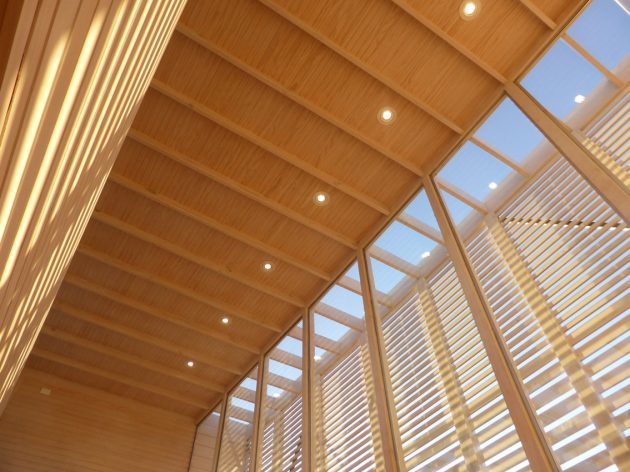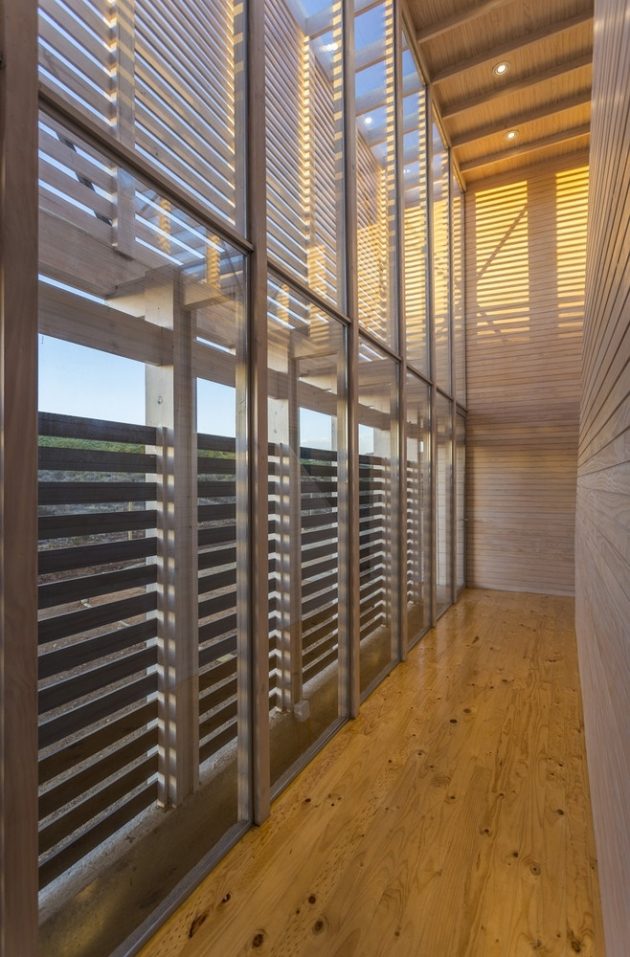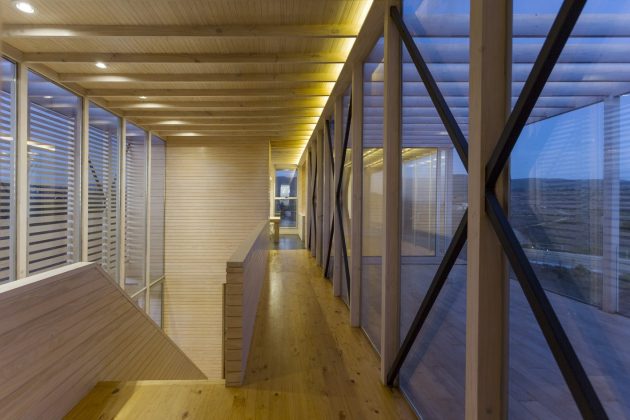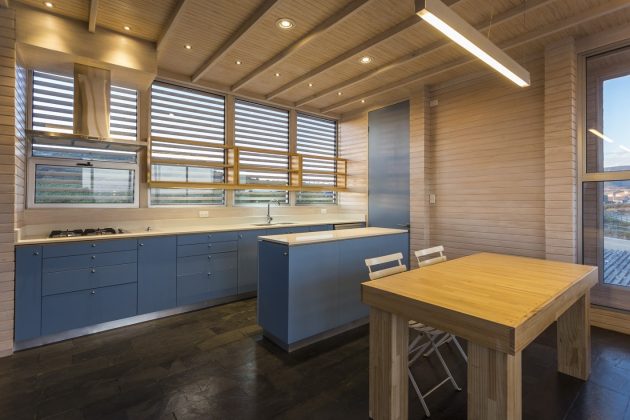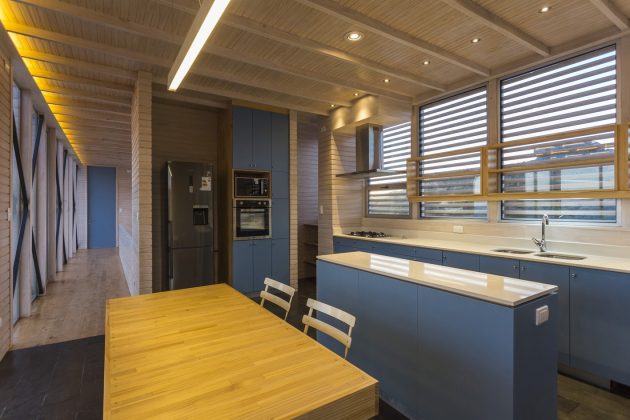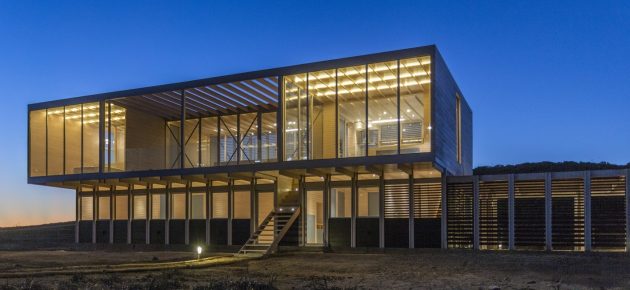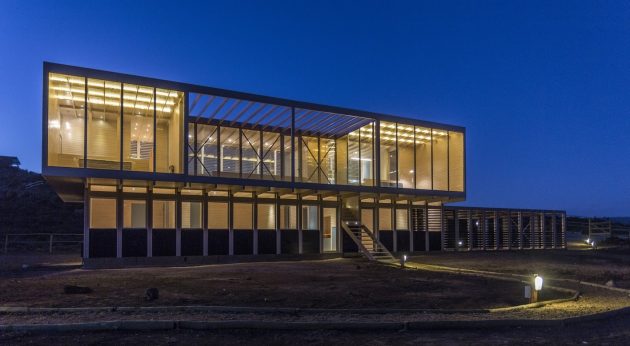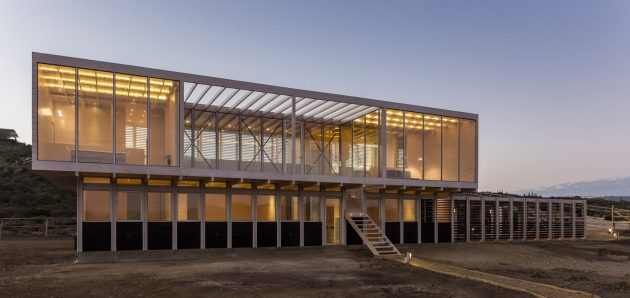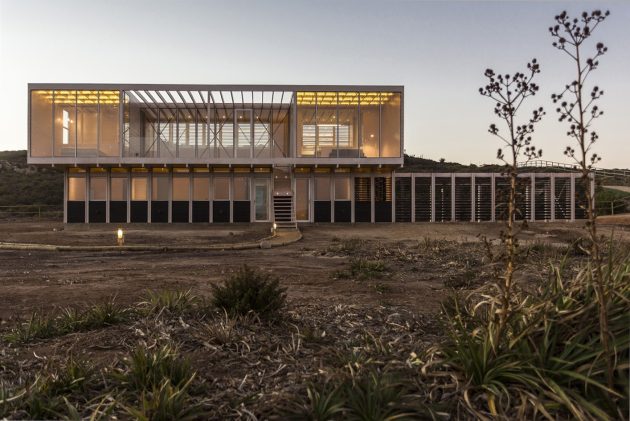Project: Tunquén House
Architects: Nicolas Loi
Location: Algarrobo, Chile
Area: 2,690 sf
Photographs by: Marcos Mendizabal
Tunquen House by Nicolas Loi
The Tunquén House by Nicolas Loi is a stunning example of how architecture can seamlessly blend with its surroundings. Located near the sea in Algarrobo, Chile, the house was designed with a logical distribution of spaces that provides a beautiful relationship with the context. The main areas of the house are located on the first floor, allowing for an unobstructed view of the sea. An open terrace serves as a boundary between the public and private areas of the house while also offering protection from the area’s strong winds.
The construction technique of the wood was used to generate the architectural design, making the structure appear more as a reductive technique rather than an additive one. The main character in the final result is the construction technique, resulting in a stunning and harmonious design.
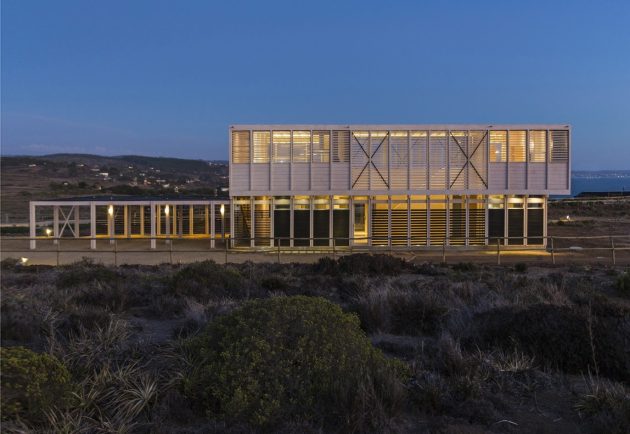
The house is locates in the beach area of Tunquén, central coast of Chile, in an almost flat site near the sea. From the ground level of the site, the views to the sea are limited, so the first design choice was to locate the most important areas of the house in the first level, from where the sea and the beach can be seen more easily.
The living area, kitchen, dining room and main bedroom are located in the first floor, as an uncovered terrace. This open terrace separates the public area from the private one, and is enclosed by 3 sides, thus protected from the strong wind of the area. This terrace also allows the sun that comes from the back of the house to illuminate the main areas from the sides. An exterior stair links the terrace with the garden. The children bedrooms, guest bedrooms, and the parking areas are located on the ground floor.
The design of the project aims to achieve no more than a logical distribution of the spaces, and a logical relationship with the context. The final design is the result of the construction technique of the wood; as a wooden box or pallet is built, the spaces of the house are created through the stacking or cross junction of one wood element with the next one that follows on the wood construction logic. The result is that the structural wood elements are the ones that generate the architectural design, and the architecture as “design” tends to “disappear” and become “construction”. In that regard, int is intended that architecture “eliminates” rather than “aggregates”, becoming more a reductive technique rather than an additive one, so the construction technique becomes the main character in the final result.
The construction logic of the wood, through columns that are close among themselves, with short beams, and short cladding between the columns, allows for the correct performance of the material, avoiding deformations. The column system allows transparency to generate sea views to the south and to allow the sun light to come from the back or north side. (The sun comes from the north on the southern hemisphere). Apart from the main structure, 2 secondary structures are added: in the service areas, such as kitchen or bathrooms, short cladding walls are located between columns, and in the public areas wooden louvers between columns are located to avoid sun excess from the north and to allow some privacy from the neighbors views.
